On Being a Working-Class Writer
How does a working-class girl from the council estate become a poet? And what’s class got to with it anyway? What does it mean to be a working-class writer? Can I still be a working-class writer now that I work in a university? What do working-class writers write about? Answering these questions requires a story.
I became a writer by accident. When I was at school I wanted to be an artist. I loved art – my brother and I were taken to London art galleries quite often when we were growing up. Bus fares were cheap then and the galleries were free. My Dad was always looking for places outside of Walthamstow to take us out at weekends and holidays because my Mum worked night shift and was the breadwinner. Dad was an autodidact – a working-class man who taught himself how to paint and draw. He worked (when he was employed), as a self-employed sign writer and our flat always smelt of paint and turps. Dad died when I was young and Mum was too busy trying to keep us fed and housed, so as soon as I was old enough, I took myself into central London and visited the galleries again.
They became my happy places. At school I studied art, but there was no chance that a kid from the council estate was going to become an artist. So I left school and worked in retail.
I had always been a reader. We had books in our flat (1) – Dad read spy novels and racy thrillers. Mum never had time to read when we were young, but she told me that when she was a child she loved to curl up with a book, but would get told off for being lazy by her father (a London Transport bus driver). No one in her household had spare hours for reading – everyone had to work. Mum’s schooling was interrupted by WWII, and despite her wish to continue at school and study to be a nurse, she had to leave at 15 and get a job. I didn’t see her read a book until I was in my teens (although she always did the newspaper crossword). She began reading again when a mobile library started visiting our estate. She liked historical romances, especially those set during WWII. Until her eyesight failed in her 80s, she always had a book on the go.
As a child I spent many hours in libraries. I’d read anything, which is typical of working-class readers. There was no sense of what might be ‘good’ or ‘worthy’ literature. Any book blurb that looked interesting was added to my pile. My local library had an excellent collection of Caribbean and South Asian literature and I worked my way through everything on the shelves. On a school excursion I saw Dub poet Linton Kwesi Johnson (2)
perform. His work showed me that I could write poems using my voice (I didn’t have to sound like Wordsworth or Tennyson – poets we read at school). This was a life-changing experience and the revelation that a non-posh voice could be valid stayed with me. At my working-class high school in the 1980s we had a visit from poet Carol Ann Duffy (3). None of us knew who she was, but a few from the English class went along to her workshop. This turned out to be another revelation. She knew how to talk to us working-class girls and she told us that our stories mattered. A poet from a poor neighbourhood like ours who understood our lives. It was clear to me from then that poetry was for everyone.
This love of poetry and of reading didn’t take me to university though. That was far from my reach. My dream of being an artist faded with the reality of leaving school and I started working full time at Hamley’s of Regent Street(4). I kept on reading (anything); I wrote poems in a notebook and created comical biographical poems for my co-workers between short snatches of time between customers on till roll). I carried on writing poems that I showed no one for years. After leaving Hamley’s to travel with a baby and partner in tow, I carried on writing but never considered publishing my poetry, although I gifted a few friends biographical poems about them. We travelled in our Kombi van around the UK and Europe and then left for Taiwan. I taught English in Taiwan with no qualifications (and likely was responsible for a cohort of Taiwanese kids with Cockney accented English).
Eventually I ended up in Australia with my Australian partner and child and we decided to ‘give uni a go’. When choosing what course to apply for I realised that the thing I’d actually always done consistently since I was a child was write poems and stories. My aspirations to be an artist gradually changed into wanting to be a writer, so I enrolled in a creative writing having little idea of what to expect. I’d never been on a university campus, and my understanding of tertiary education was formed through film and TV. I was required to submit a portfolio of writing with my application and I collected up all the things I’d written over the years and typed them up on a library computer (I couldn’t type – this process was excruciating. I was one of the only girls in my high school who didn’t take typing as an elective). I was called in for an interview at the university and told by the interviewer that my work had ‘potential’ – I had no idea what that meant.
I was accepted into the course and discovered that what I loved to write about was my experiences of being working class. Of my old home in London, my family, friends and the working-class community that I’d left so far behind in England.
My writing was well received by my tutors at uni and they were very encouraging and supportive. The first poems I started to get published in the late 1990s were centred on life on the council estate I grew up on, and by the end of my undergrad degree I had a collection in print (5). I incorporated Cockney songs into some of these early poems and enjoyed performing them to an Australian audience. I read at venues across Sydney and interstate. I even had a spot at at the Sydney Writers’ Festival in 2001. I was starting to make a bit of a name for myself but there were obstacles. I experienced dismissive and patronising comments from some well-established Australian poets. It was at this time that I realised that the gatekeepers of the Australian literary establishment were generally not interested in, or sympathetic towards, working-class poetry. So I started a PhD (6) investigating the lack of working-class representation in contemporary Australian poetry and discovered that working-class poets had been shut out of the literary mainstream. They found their work dismissed as simplistic or didactic. As sociological or overly political. Lacking in literary technique – not enough use of metaphor. Too focused on the everyday, the mundane. I saw it differently. Working-class poetry was full of life. It was about collective experience. There were poems that focused on hardship, poverty, trauma. Life living hand to mouth. Struggle was common. But there was also celebration of community, of working-class culture, and working-class diversity. The poems were often funny and the poets used humour as a survival tool. The language was simple, not simplistic. And metaphor might have been used sparingly, but that was because the poets wanted to represent the reality of their everyday lives – working class life often didn’t have time for metaphor.
The poets I talked to at the time had all found it very difficult to get published in mainstream literary journals. Many were very popular in their home towns, and drew large crowds to readings. Some self-published and sold many books on their own. Not many found their work reviewed in literary magazines, and they preferred to read at local events in pubs or worksites rather than literary festivals. Aside from a few notable exceptions, the Australian literary establishment gatekeepers were not interested in working class poetry. Or other working class writing. At this time (2000-2007), they were not interested in class at all, and this was a sentiment shared by academia too. As I started my academic career (as a casual academic for the first ten years), I began a battle with academics to recognise class as significant in Australia. I was told that class wasn’t a ‘thing’ in Australia, and I should leave my British class hang-ups behind. I was accused of having a class chip on my shoulder and asked when I was going to ‘get over the class schtick’.
But you can’t ‘get over’ being working class. It’s possible to hide a class background and learn to speak like middle/upper class people. An accumulation of educational and cultural capital can help with the passing. This means a rejection of family, friends, communities though. A class betrayal. Certainly not my intention. My working-class background has shaped me. I learnt how to survive hardship, to make the most of what you have. To always be ready to help others, to stand up for yourself and your community. My mother taught me these values. She kept us fed and clothed and kept the ‘social’ from the door. I watched her stand her ground in the DHSS office when they refused her emergency payments. She saw off bailiffs and loan sharks. She recognised who was at fault – the government, Thatcher in particular and later, all politicians who cared about making themselves richer. My mother looked after her neighbours and when she needed help, they looked after her. When I wrote my first collection of poetry, she was a big feature – a persona based on her was very important to the collection.
My working-class background is my old school, work friends, neighbours. It’s the council estate I grew up on, concrete playgrounds where I skinned my knees, the local newsagents where we bought sweets. Pubs I went to as a teenager, the street market, local caffs (cafes). Buses I rode, libraries I trawled. It’s everything. I’m proud of my working-class background. My university education and my academic job has not stopped me from being working class. I am a working-class academic. I am fortunate to now have a continuing position and earn a respectable salary, but that’s where my economic capital ends (no inheritance – my mother lived in a council flat until she died). I accumulated cultural capital as an autodidact before starting university as a mature age student. But I don’t have knowledge of the ‘classics’ like many of my middle-class colleagues. Middle-class pursuits are mostly not for me. If there is a working-class play being performed I might go see it, but I’m not interested in bourgeois theatre productions. Films are more my thing – and my love for independent, global art house cinema started off as a working-class teenager looking for cheap entertainment in central London after school (art house cinemas offered good concessions). If I go to a pub, I like one that sells Carlton Draught rather than micro-brewery craft beers. I resent paying more than $5 for a glass of wine that I don’t even like. I watch TV – lots of it. And I don’t have ‘guilty pleasures’. If I watch Love Island, it’s because I like it, not because I’m watching it ironically.
Things are changing. Not necessarily in the world of literary journals in Australia, but more widely. People are interested in class again (7). After all the years of working-class academics and writers ‘banging on’ about class, people are starting to listen. There is a growing volume of Australian fiction set in working-class communities. Books such as Peter Polities’ Down the Hume (2017), and The Pillars (2019) Luke Carman’s An Elegant Young Man (2013), Felicity Castagna’s The Incredible Here and Now (2013), Omar Musa’s Here Come the Dogs (2014), Michael Mohammed Ahmad’s The Lebs (2018), Tamar Chnorhokian’s The Diet Starts Monday (2014), Claire G. Coleman’s Terra Nullius (2016), Sue Williams’ Live and Let Fry: A Rusty Bore Mystery (2018) and Enza Gandolfo’s The Bridge (2018) show the ways in which class intersects with race, ethnicity, gender, sexuality and religion.
Melissa Lucashenko’s Too Much Lip won the 2019 Miles Franklin award. The 2020 Sydney Festival includes Anthem – a play centred on working class characters written by Christos Tsiolkas, Andrew Bovell, Patricia Cornelius and Melissa Reeves. And I have a contract from a publisher to write an academic book on Australian working-class literature.
It’s hard to crack the literary journals though and in Australia there still isn’t a lot of working-class poetry appearing. It isn’t clear why this is the case, and I’ll be investigating this as part of my new research project. The working-class poets I included in my PhD, have mostly stopped writing. Cathy Young, from South Australia had one book published in 2004, but nothing since. Her partner and fellow poet Martin R. Johnson published three collections, but also stopped publishing in 2004. One of the poets who was most prolific at the time was Geoff Goodfellow (also from SA). Goodfellow last published a book in 2014, with a self-curated collection of previously published poems. He hasn’t published any new works since 2012. While I haven’t had a chance to catch up with the poets yet to ask why, it is clear that they were rarely published in Australian literary journals. Young and Johnson concentrated their efforts into publishing locally, and Goodfellow focused on publishing collections with small sympathetic presses such as Vulgar Press (now defunct) and SA Wakefield Press. Most of the other poets in my PhD published sporadically and then disappeared.
A quick survey of 2019 issues of some Australian literary journals reveals some working class poetry. Mykaela Saunders in Cordite with ‘For Cops Who Stalk Children on Houso Estates’ (8). Her poem shows how class intersects with race and gender. In ‘Those Days in the Dirt’ (9) from the same issue of Cordite – Tom Lewin’s narrator reminisces about his days as a manual labourer and the company and camaraderie found among working class men. There are some poems written about working class grandfathers, and there is also some class fetish. Ian C Smith’s ‘Sanctuary’ paints a picture of a homeless man, but the man is observed from a distance – he could be local wildlife. I haven’t come across much in Overland or Meanjin etc lately, but I need to keep digging. Melbourne poet Pi. O. has published a new epic 500 page poem, Heide with Giramondo. Pi. O.’s work has always focussed on working class life, but his obscurity means he is not often featured in the literary mainstream.
So why is working-class experience mostly absent from contemporary Australian literature? What are the reasons for the middle-class domination of the literary scenes? What is the potential impact of the lack of representation? How can this lack of representation be addressed?
Working-class literature is important, not just because it is the literature of marginalized people, but also because it includes a diverse array of literary styles, techniques and forms. At the same time, there are some commonalities that can be identified and which mark it as belonging to its own specific genre (10). Working-class literature is therefore a rich source of writing and there are various ways that working-class literature can be analysed. This analysis can also be framed around a series of questions; how does working-class writing engage with the working-class vernacular? Is there a sense of working-class culture that runs through the works? How does this manifest? Does work (or unemployment) feature in working-class writing? How is working-class literature political? Are politics explicit in the works or embedded in representations of the everyday for working-class people? And is the diversity of the working class and working-class experience represented?
I’ve been asking these questions for a long time, and every time I encounter some working-class writing, I find myself asking them all again. I have some answers. Working-class experience is missing from contemporary Australian literature because the gatekeepers have been middle class and not interested in working-class life. This middle-class domination is enabled due to structural privileges. Middle-class people are more likely to have university degrees than their working-class counterparts, and are more likely to have degrees in the arts, and to seek work in the creative industries. A lack of representation means that working-class people are not seeing their stories told – this reads as a cultural signifier that working-class experience is not important nor a worthy subject for literature, especially poetry. To address this lack of representation requires more working-class background people in gatekeeper roles, and a willingness on the part of middle-class editors to publish working-class writing.
To answer the questions that frame analysis of working-class writing is easy. Working-class writing employs a working-class vernacular, and poets use the colour of slang and dialect, and the rhythms of everyday speech in their work. Various elements of working-class culture run through the poetry – this includes working-class pastimes, food, popular culture and the more general culture of collectivism. Working-class poets write about work in all of its forms; manual labour, routine white-collar work. They write about precarity, about bastard bosses, unemployment, fighting Centrelink, union power and the camaraderie of work mates. Politics is embedded in working-class writing. If a poet comes from a working-class background and writes from a working-class perspective, then the poems are inherently political because they are published against the odds. And working-class writing reflects the diversity of working-class people and challenges the media representations of working-class people as white, blue collar male workers.
What would I like to see? Poetry that engages with the working-class everyday. This is poetry that doesn’t hold back, that reveals struggle, but also the positive aspects of working-class life. Writing about struggle works best when it’s been experienced first-hand, otherwise it easily turns into poverty porn. The working-class poetry I would like see is written by poets who understand how class works and how it intersects with race, ethnicity, religion, gender, sexuality, ability. This is working-class life. It is diverse. Working class people are not a homogenous group. But there are shared understandings, commonalties such as bosses who exploit, economic insecurity, the fight for decent housing, education, health care. There are differences too – white working-class people experience class discrimination, but not racism. Working-class women often find themselves on the receiving end of sexual harassment at work (and can feel powerless to report). LGBTIQ+ working-class people can feel marginalised in some working-class communities. Working-class disabled people face daily struggles due to expenses involved in accessibility. I want to see all of this in the poetry that is published in Australia. Poetry written, by, for and about working-class people. Class is in vogue again, and hopefully this interest in academic work, memoir and commentary will spill over into poetry and emerging working-class poets will feel inclined to submit their work and show through poetry the struggles faced when working class. If anyone had told that girl from the council estate that one day she would be an academic and a published poet she probably would have laughed. The more that working-class poetry is published, the more likely it is that working-class young people will see literature and art as real possibilities and worth pursuing. And so, I remain optimistic.
Citations
1. bell hooks points to the importance of books in working-class households as paving the way for education and the potential transformation that comes with formal education, hooks, b. (2010) Teaching Critical Thinking: Practical Wisdom, New York, Routledge, p 127
2. http://www.lintonkwesijohnson.com/linton-kwesi-johnson/
3. https://www.poetryfoundation.org/poets/carol-ann-duffy
4. Hamley’s is a very famous toy shop in Central London.
5. The thesis is available online: https://opus.lib.uts.edu.au/bitstream/2100/615/2/02whole.pdf
6. Hope in Hell (2002), published by Five Islands Press
7. For a good introduction to Working-Class Studies, see Linkon, S. L., Russo, J. (2005) New Working-Class Studies, Ithaca, Cornell University Press. For books on working-class literature see, Zandy J. (1990) (ed.) Calling Home: Working-Class Women’s Writings, an Anthology, Rutgers University Press and Fitzgerald, A., Lauter, P. (2001) (eds), Literature, Class and Culture: An Anthology, New York, Longman, Goodridge, J., Keegan, B. (2017) A History of British Working Class Literature, Cambridge, Cambridge University Press, Coles, N., Zandy, J. (2006) American Working-Class Literature: An Anthology, Oxford, Oxford University Press.
8. http://cordite.org.au/poetry/peach/those-days-in-the-dirt/
9. http://cordite.org.au/poetry/peach/for-cops-who-stalk-children-on-houso-estates/
10. Zandy J. (1990) (ed.) Calling Home: Working-Class Women’s Writings, an Anthology, Rutgers University Press
SARAH ATTFIELD is a poet from a working-class background. Her writing focuses on the lived experiences of working-class people (both in London, where she grew up and in Australia where she lives). She teaches creative writing in the School of Communication at UTS. She is the co-editor of the Journal of Working-Class Studies.
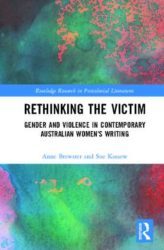 Rethinking the Victim: Gender and Violence in Contemporary Australian Women’s Writing
Rethinking the Victim: Gender and Violence in Contemporary Australian Women’s Writing Damascus
Damascus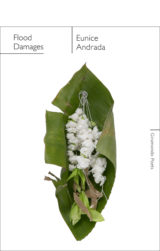 Flood Damages
Flood Damages Sweatshop Women: Volume One
Sweatshop Women: Volume One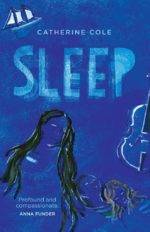 Sleep
Sleep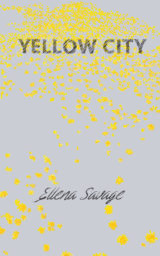 Yellow City
Yellow City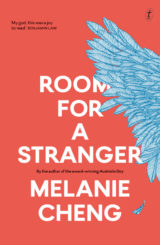 Room for a Stranger
Room for a Stranger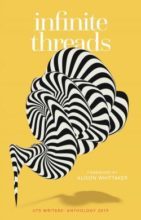 Infinite Threads
Infinite Threads Crow College: New and Selected Poems
Crow College: New and Selected Poems